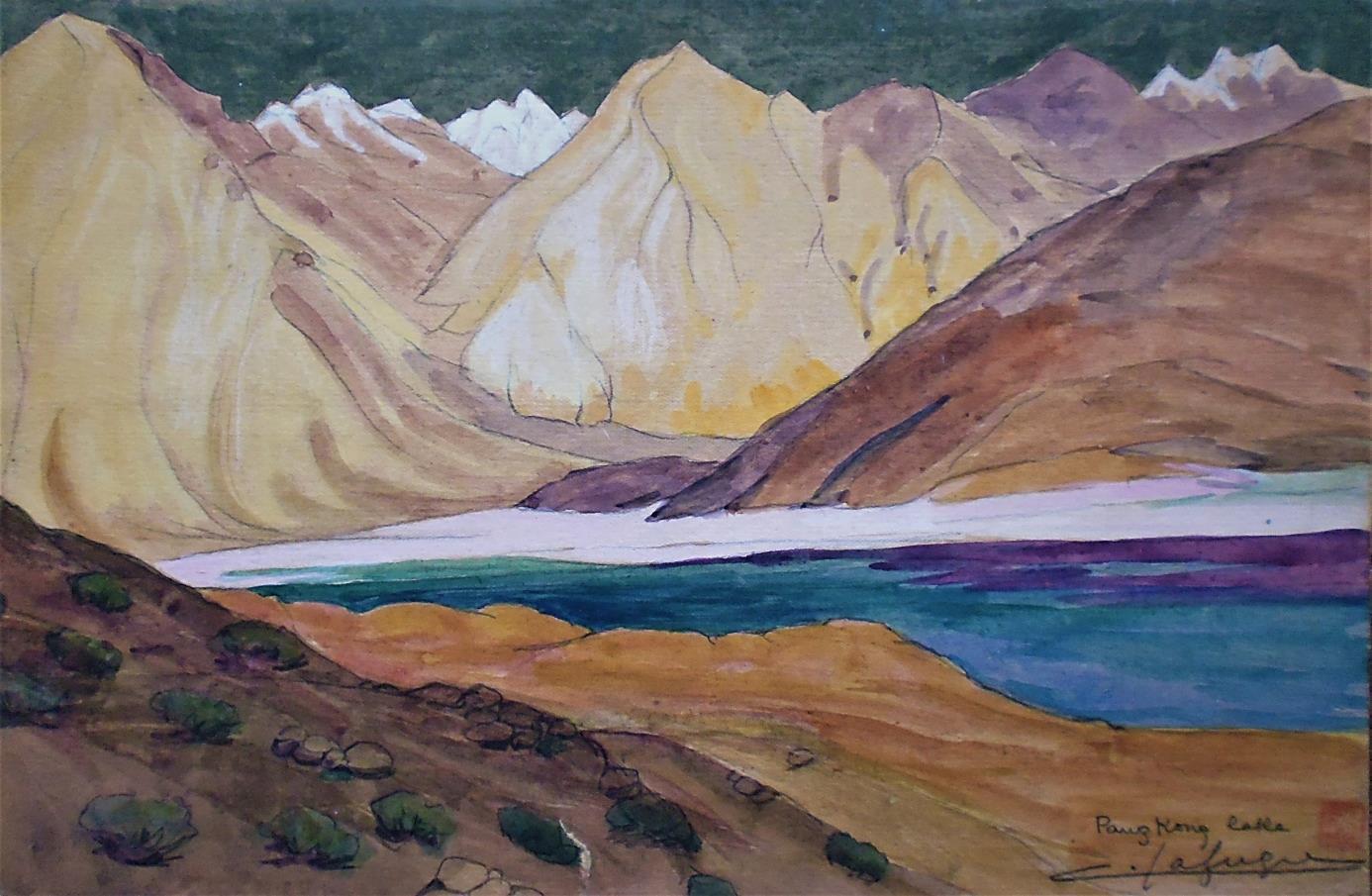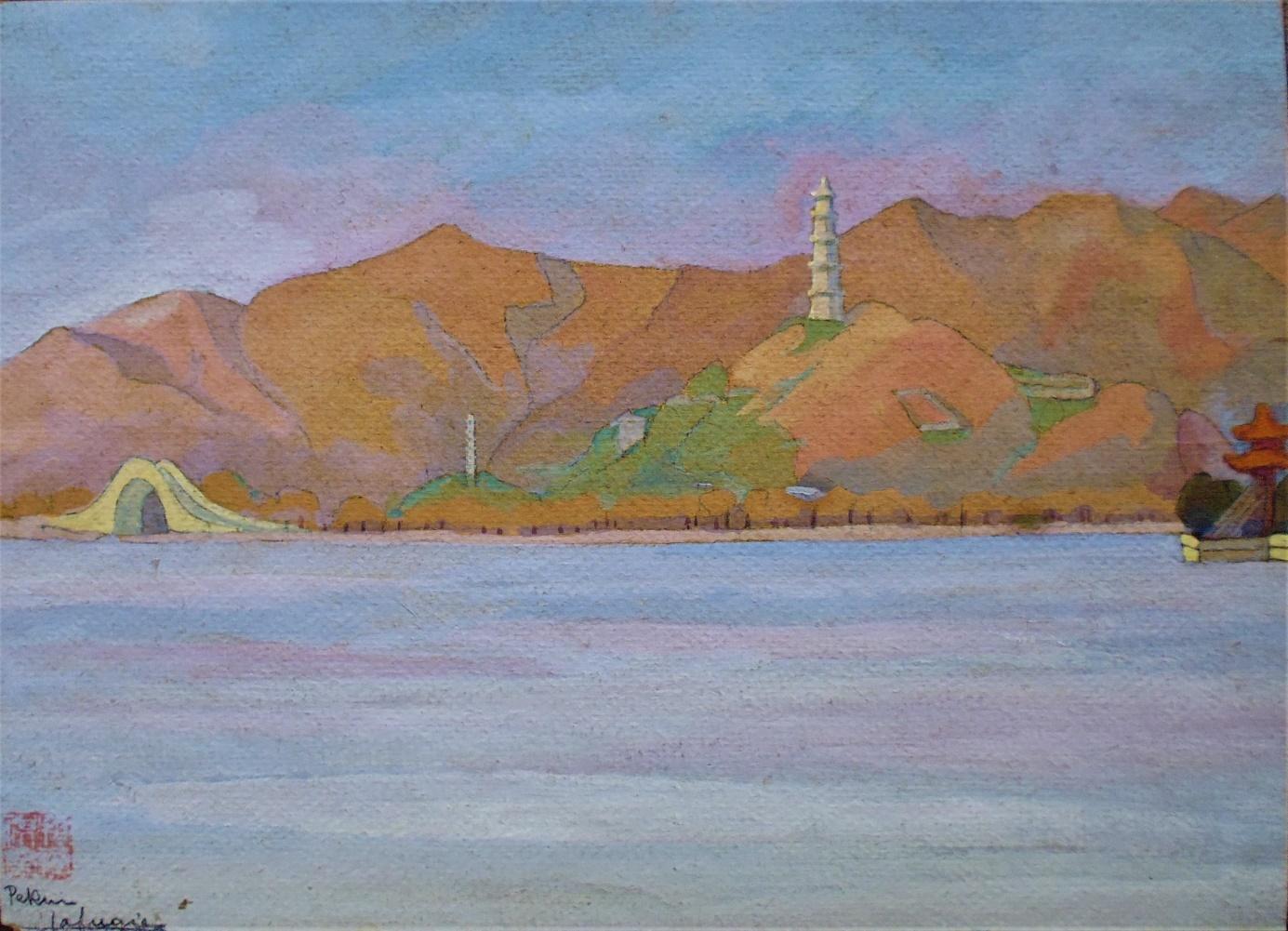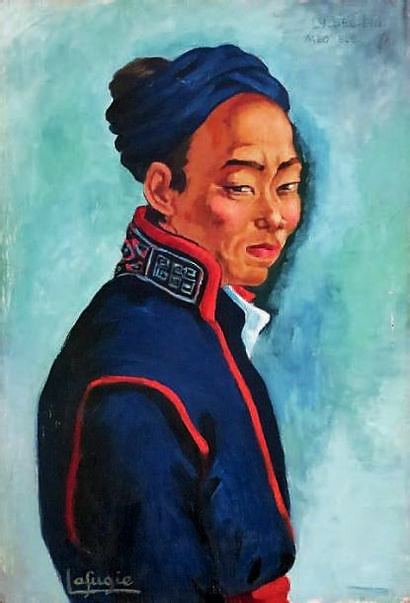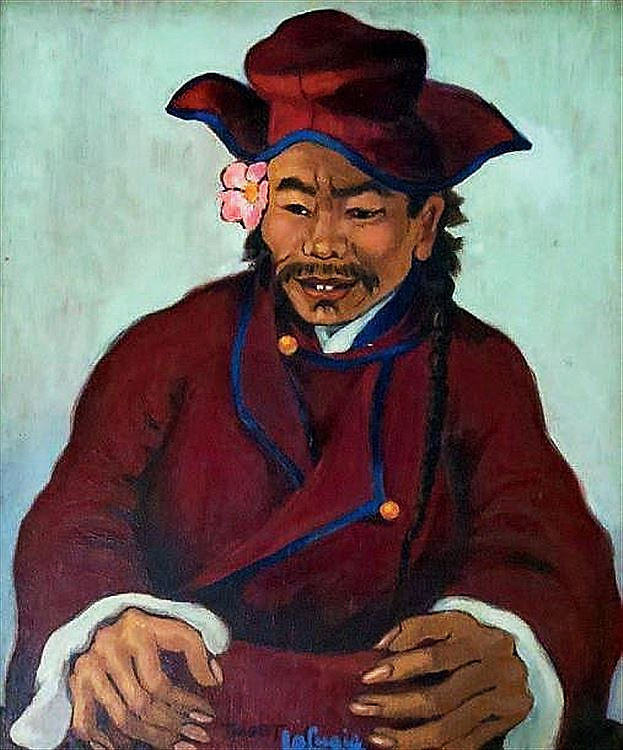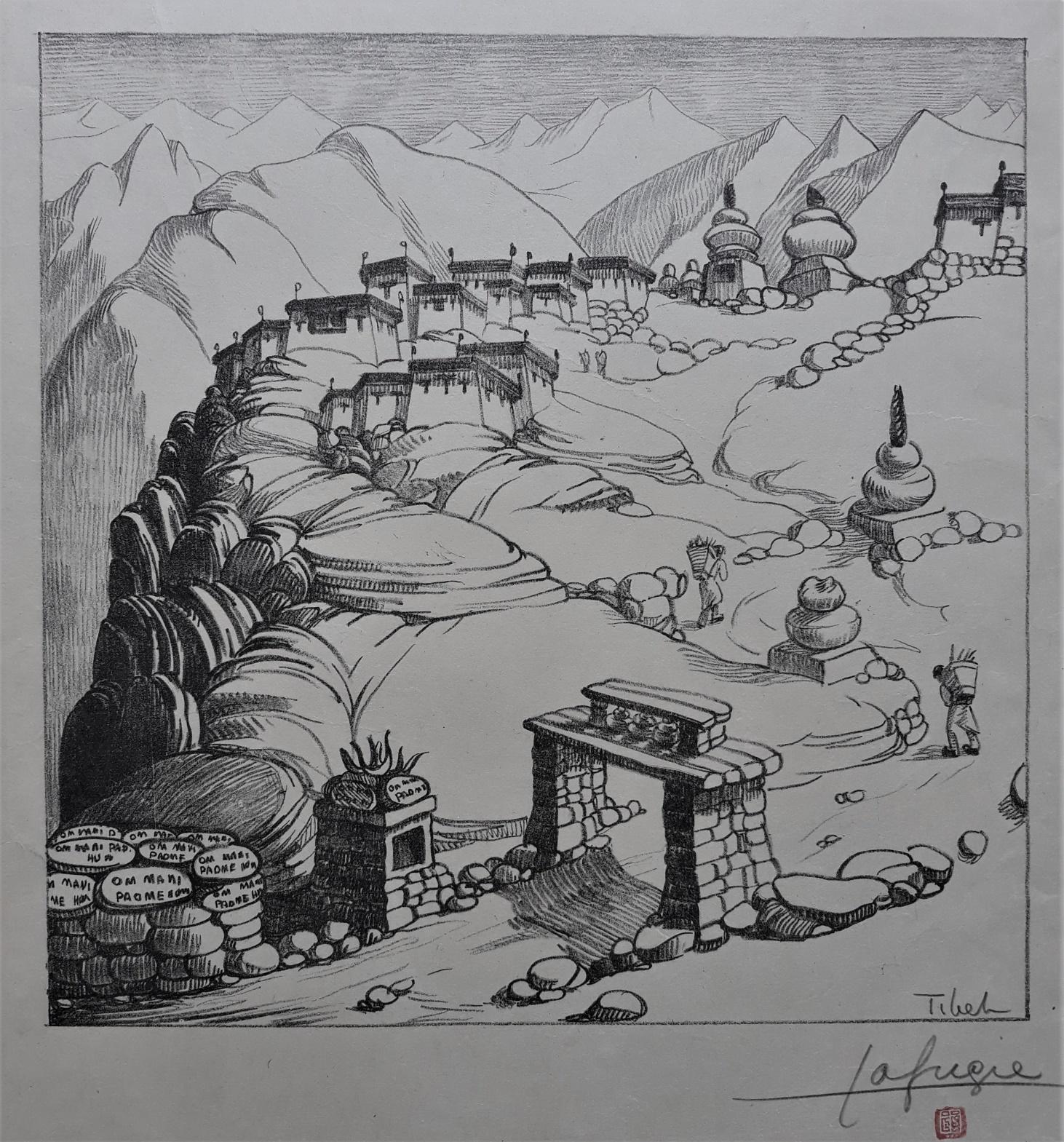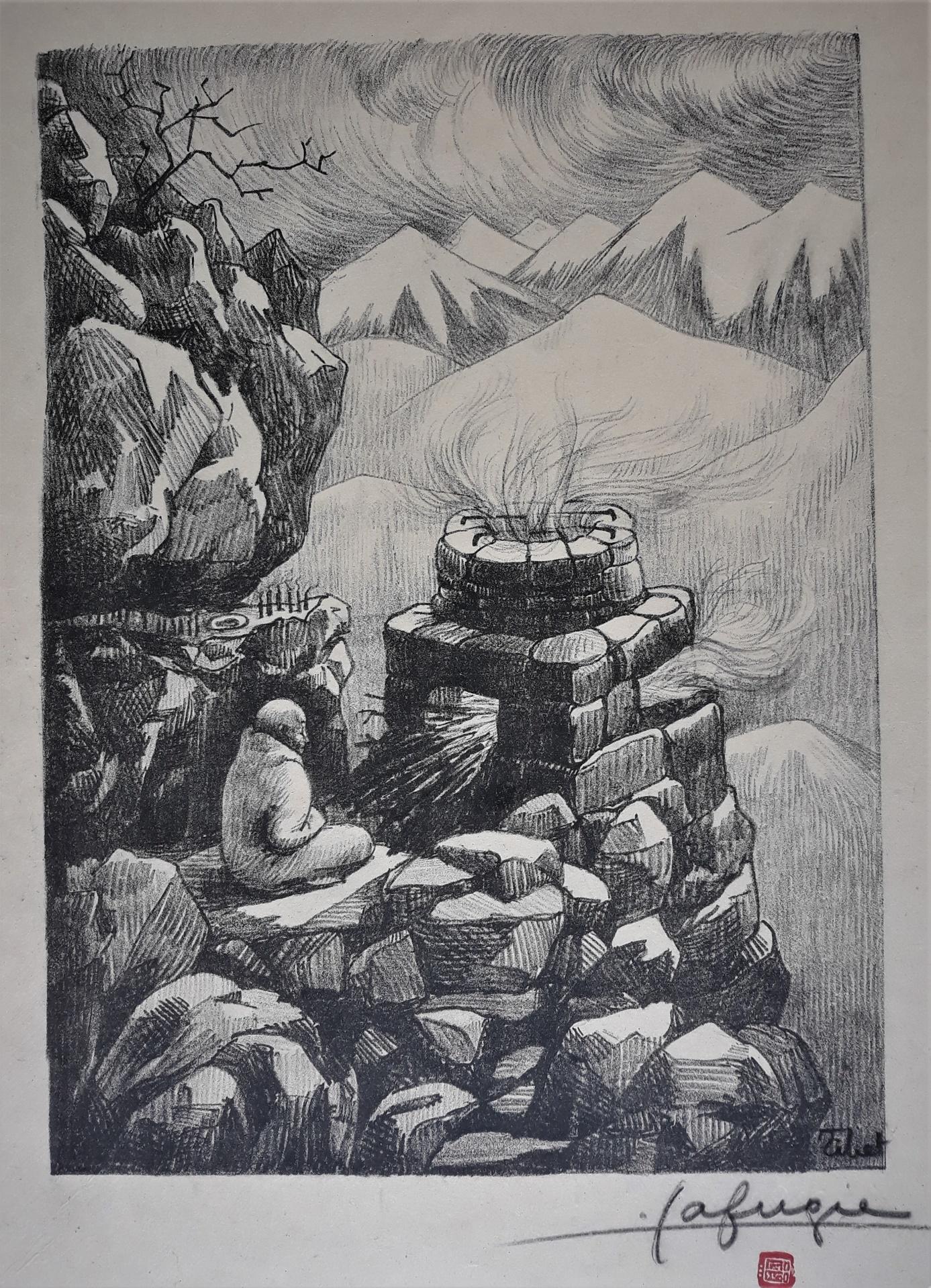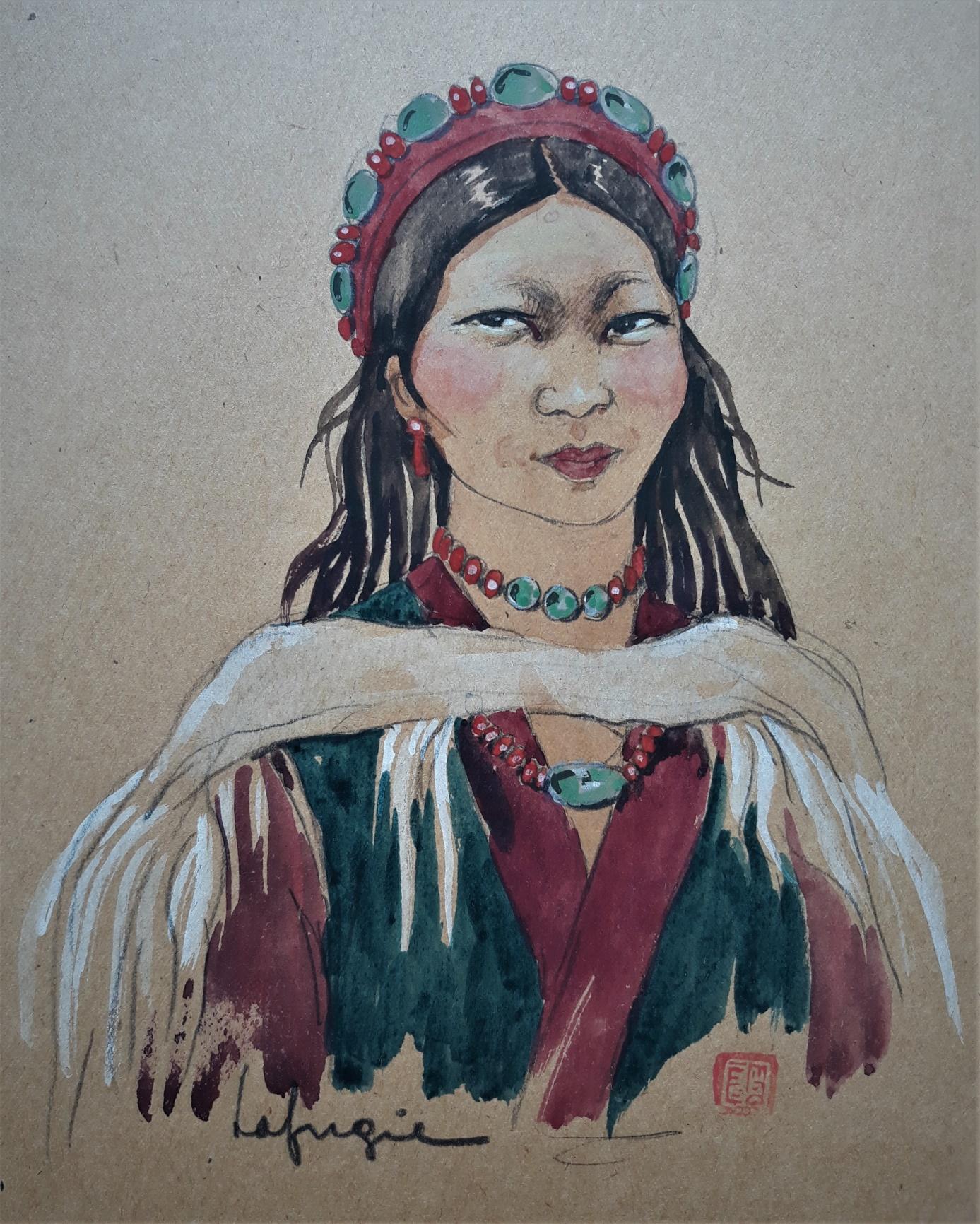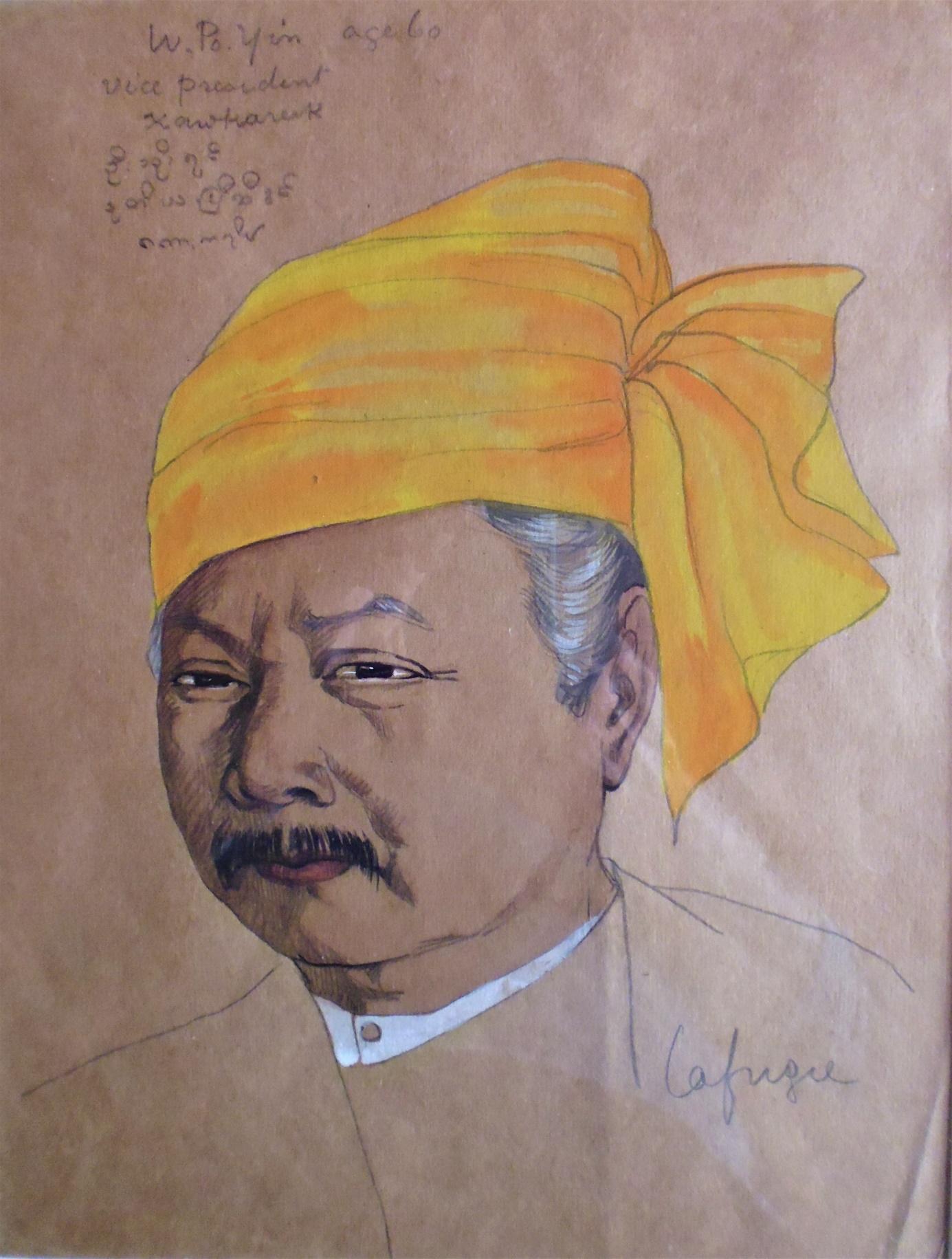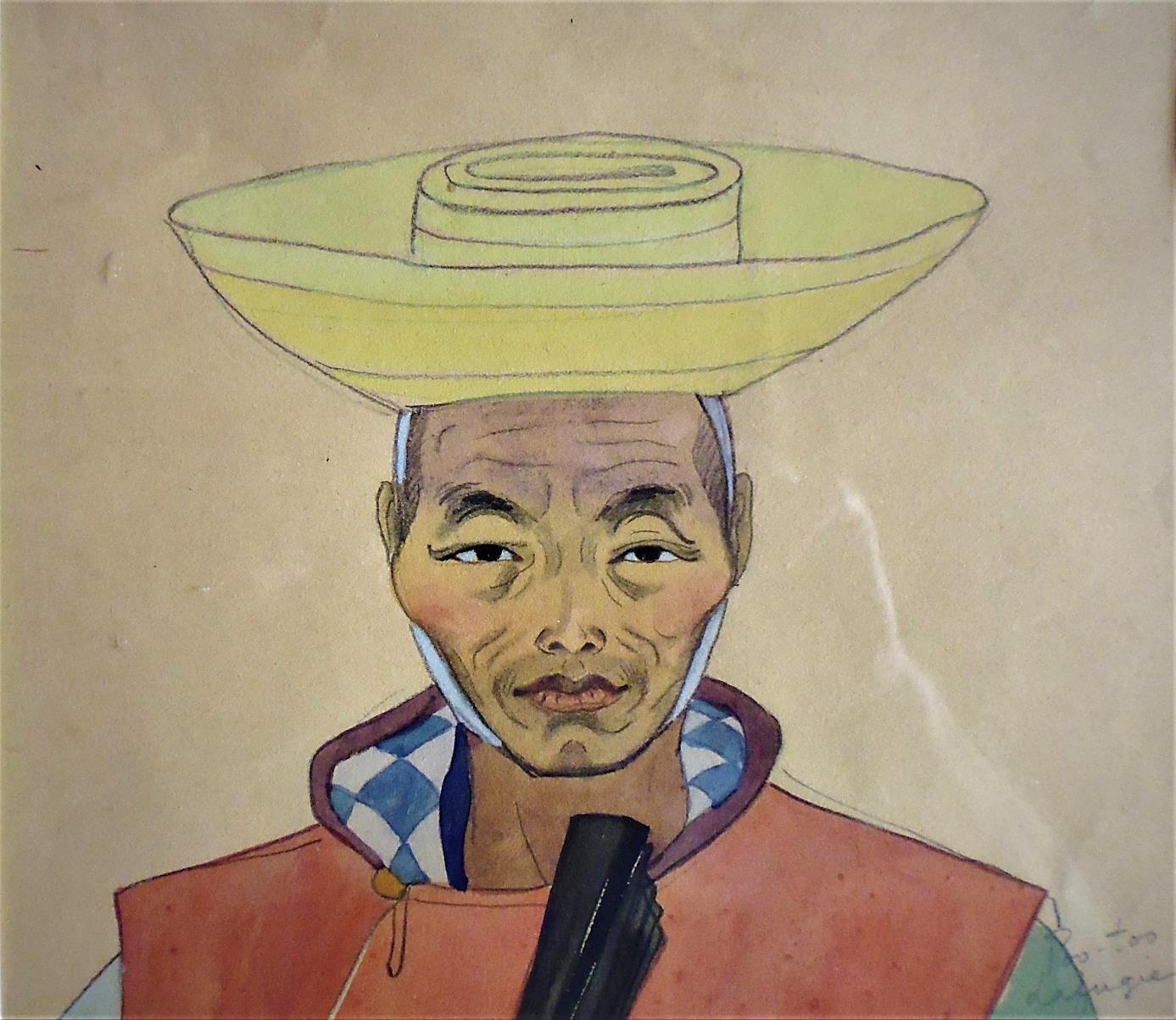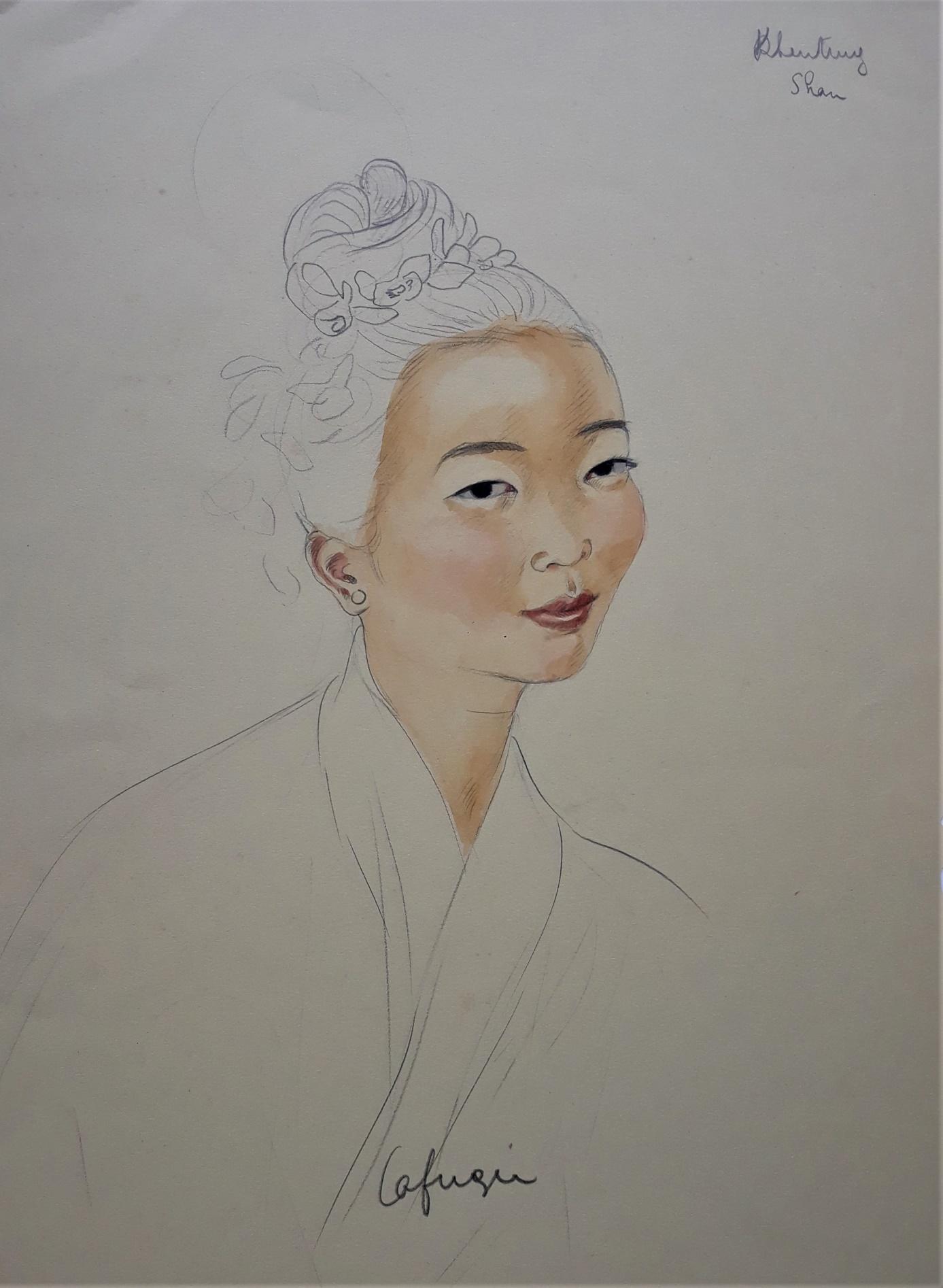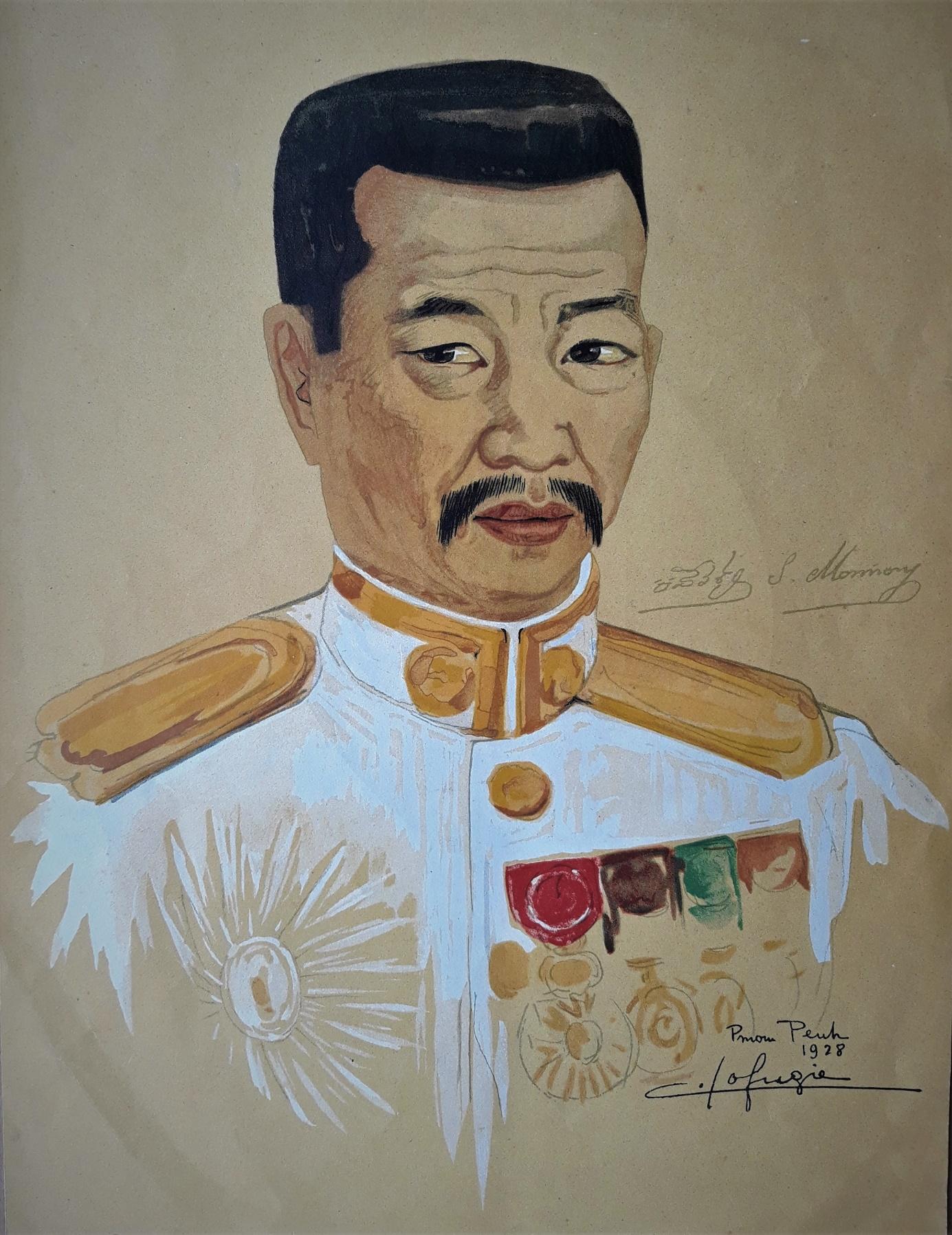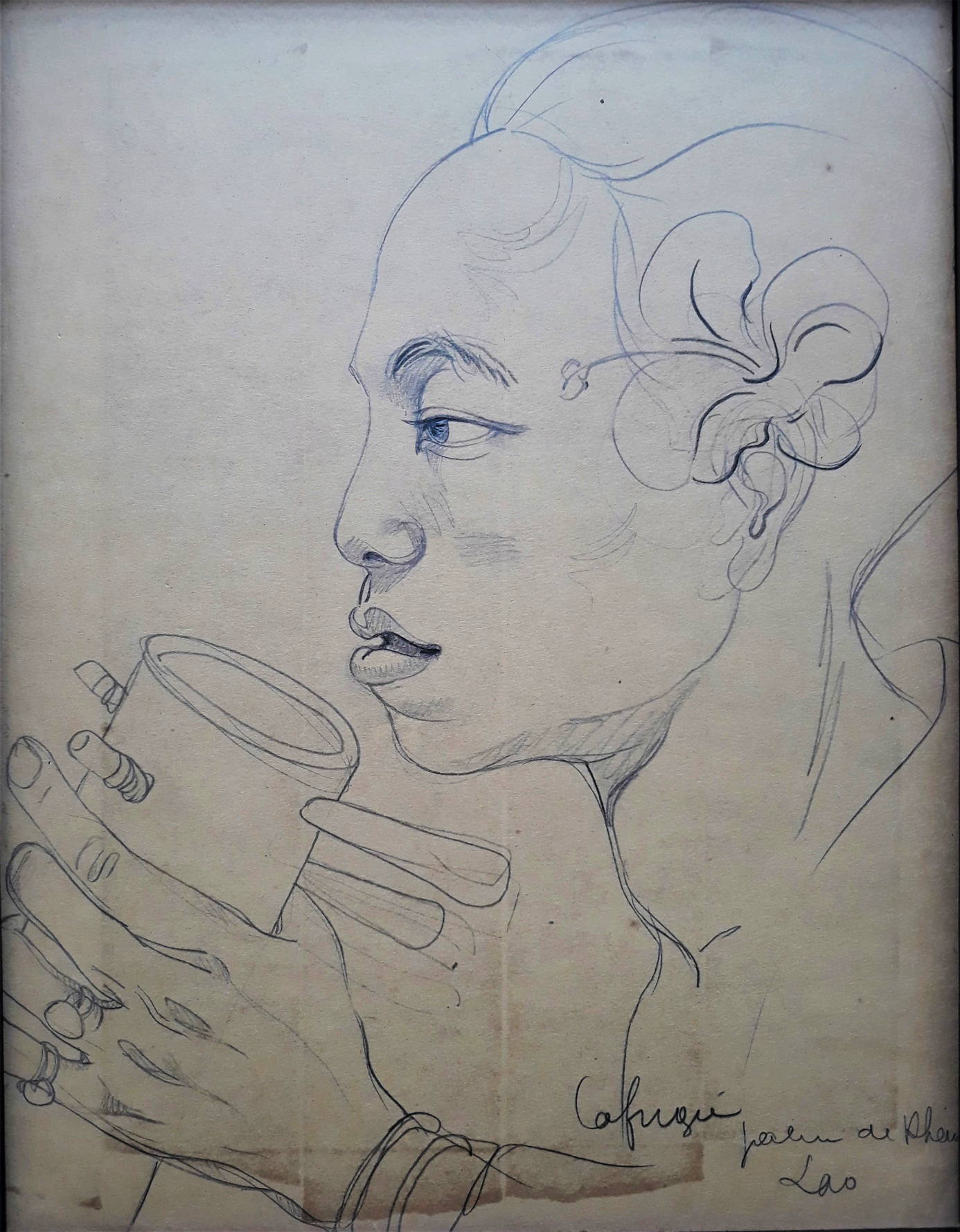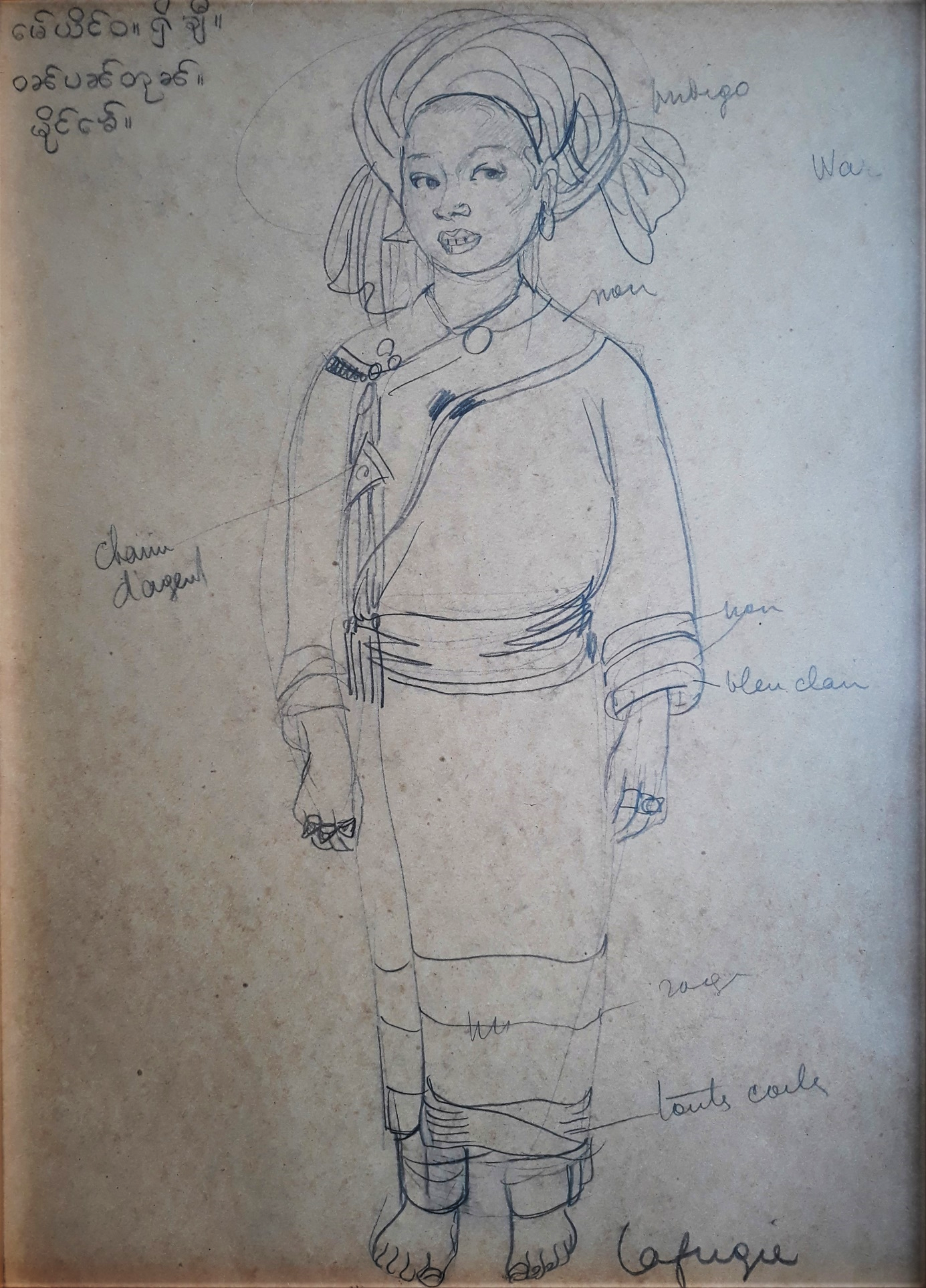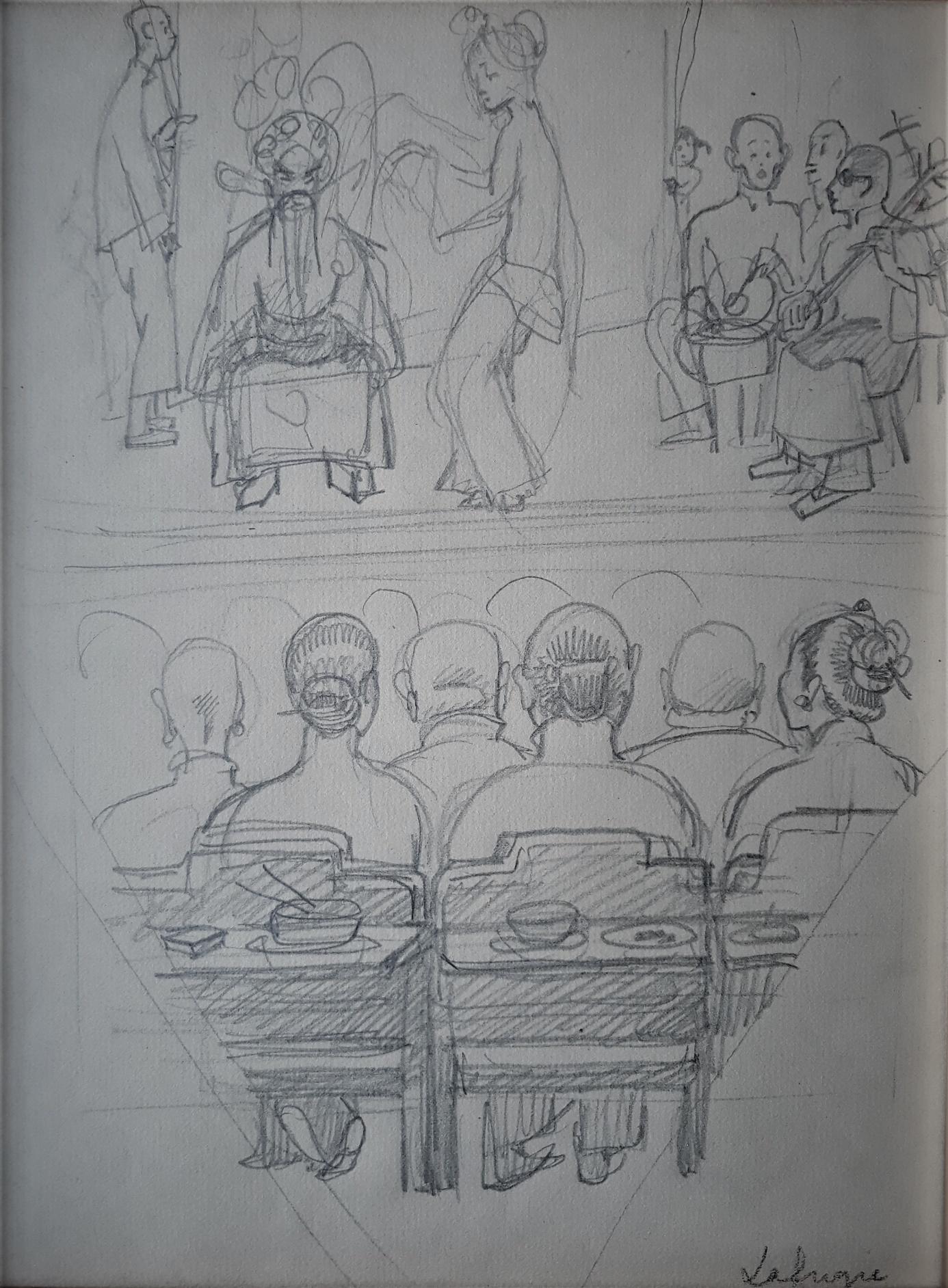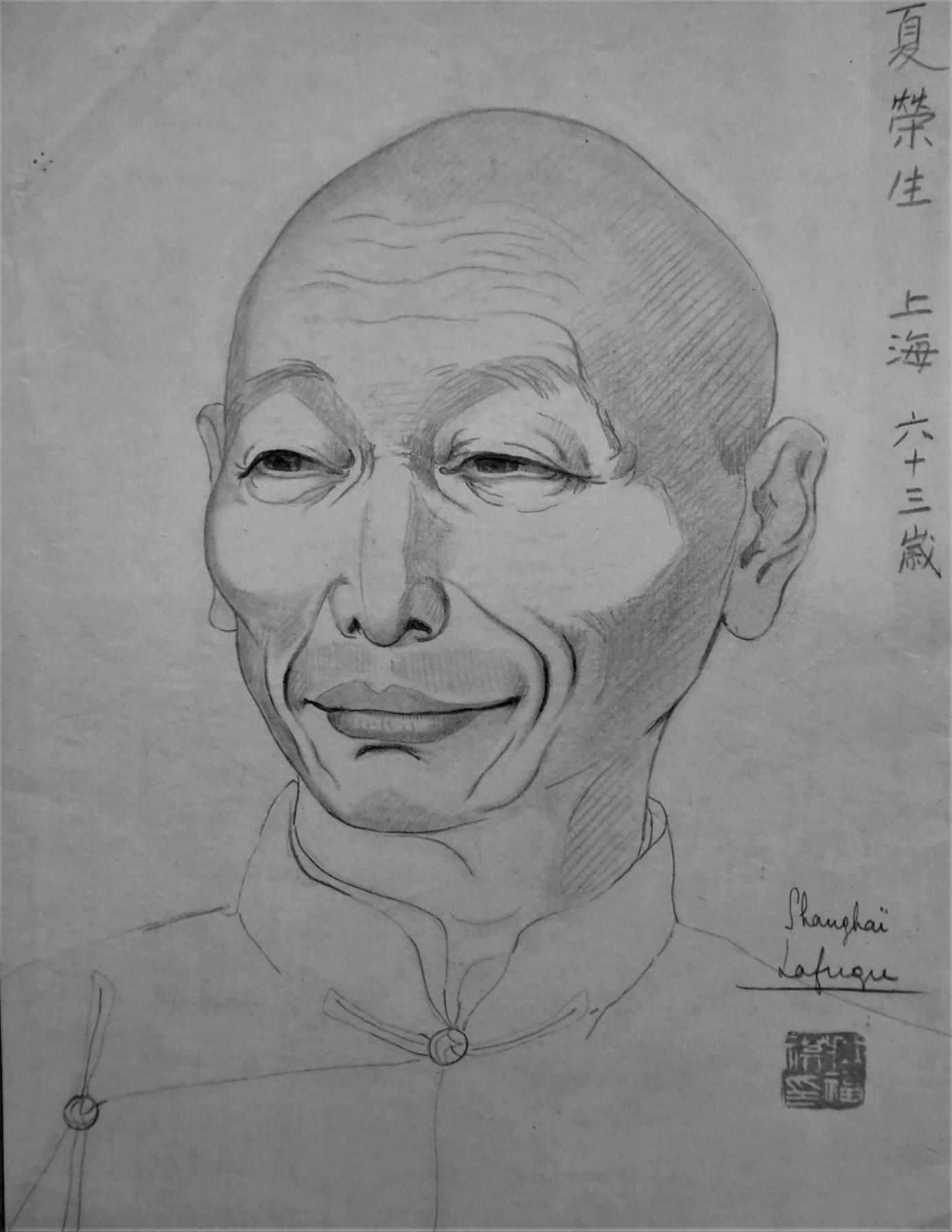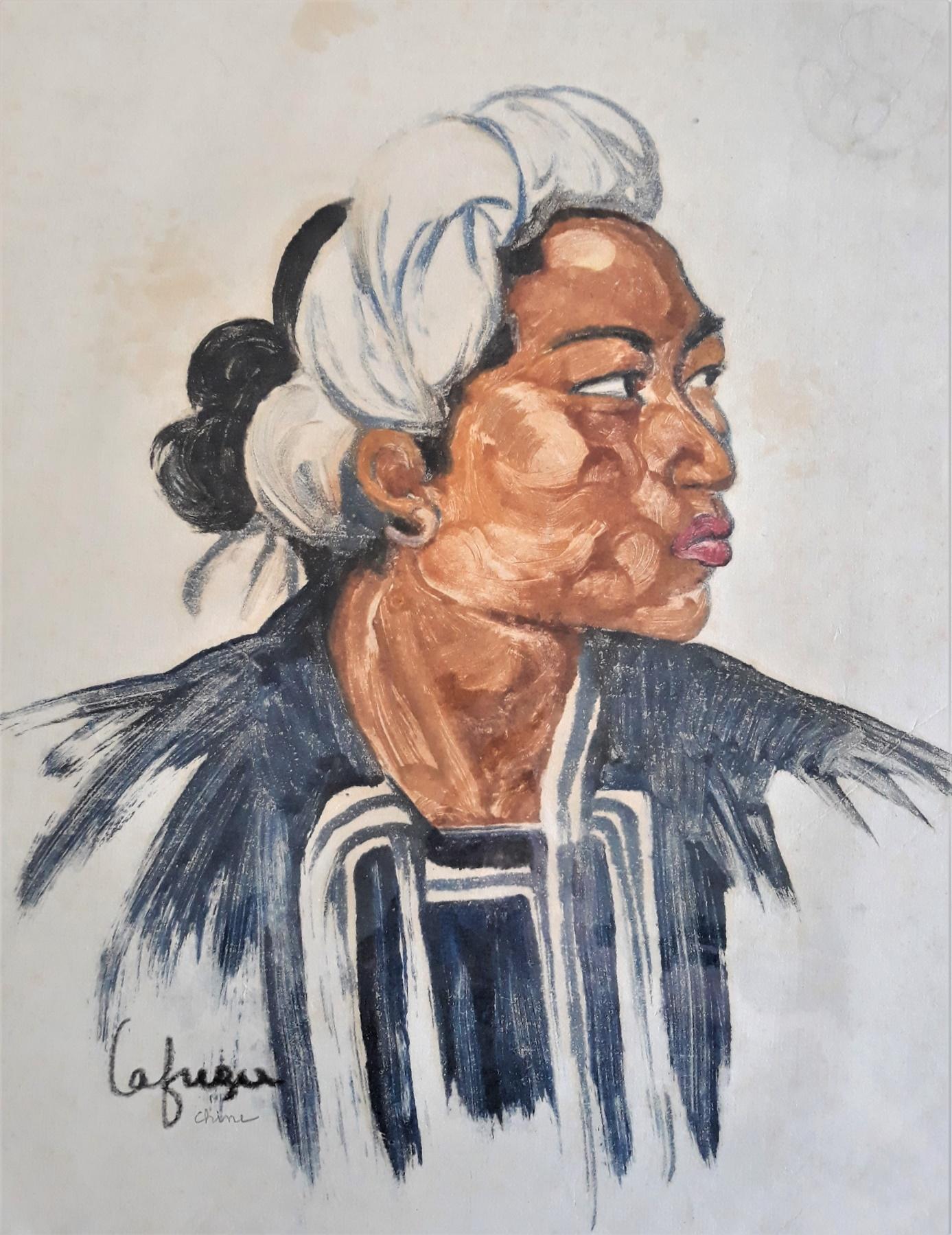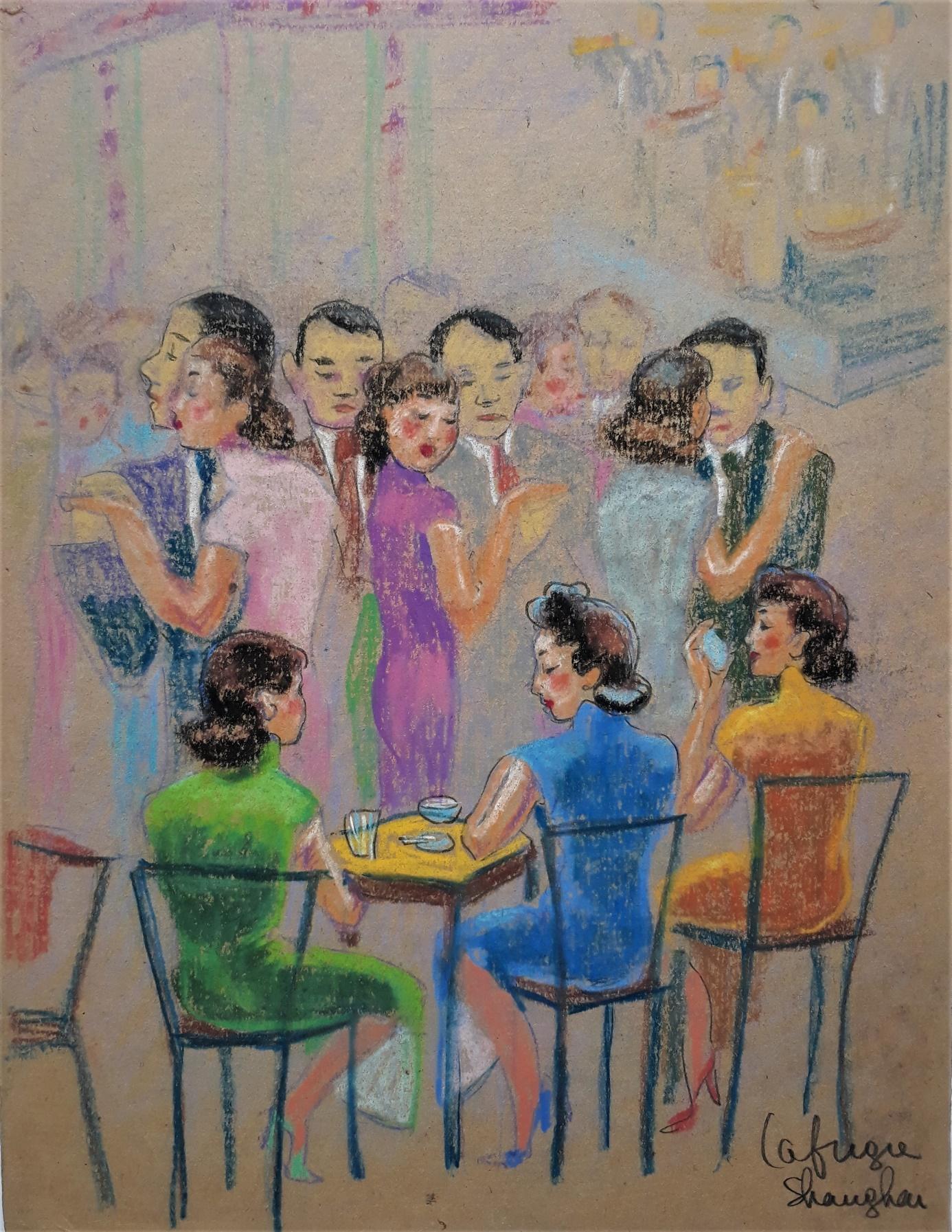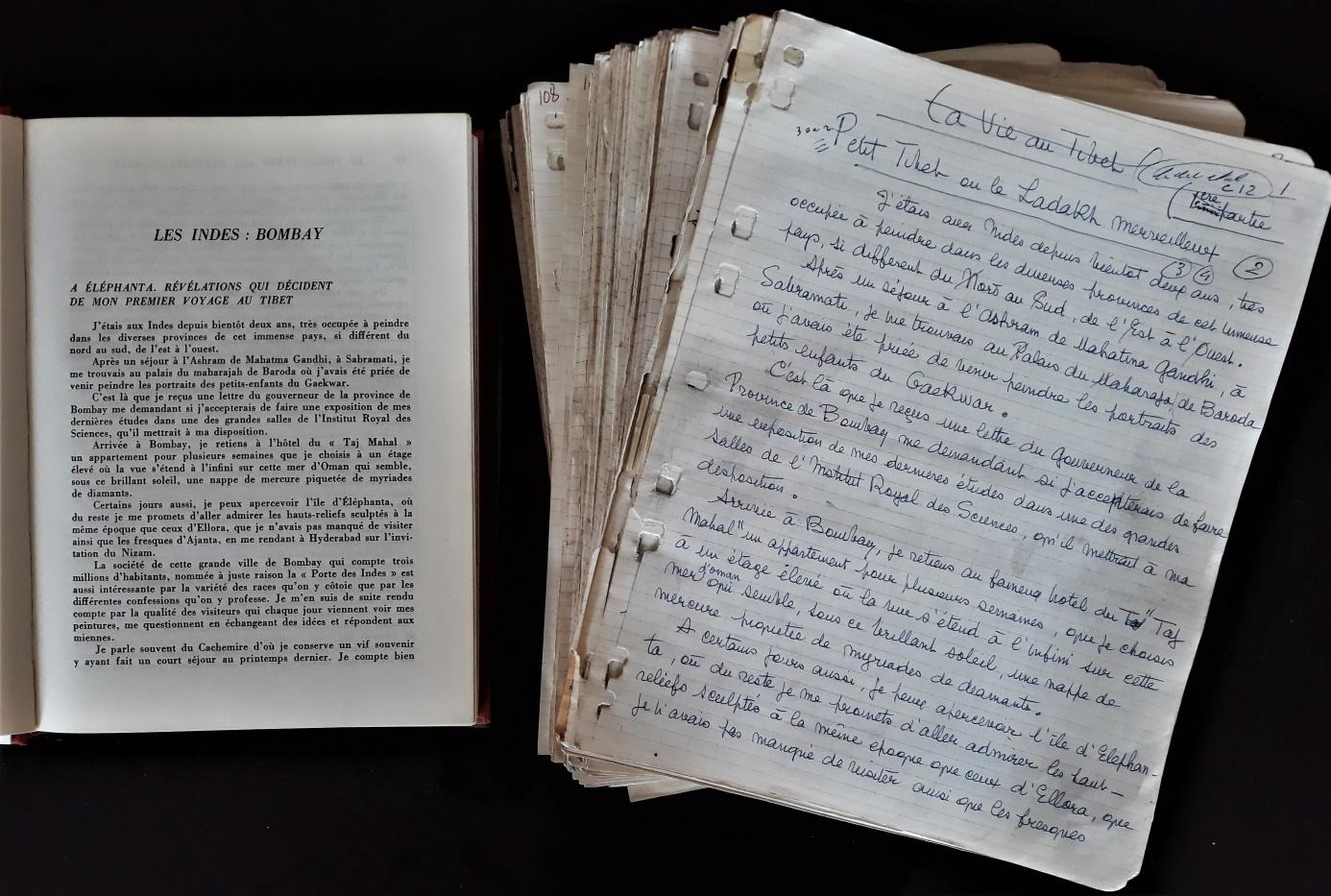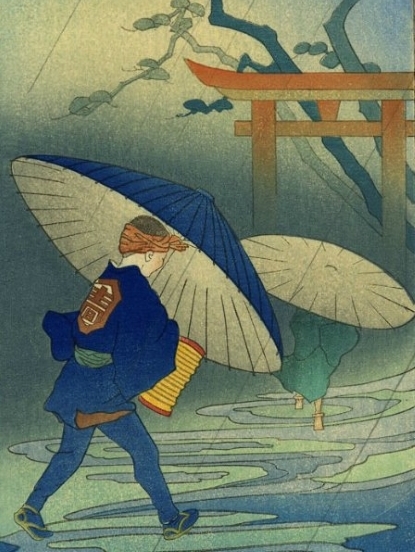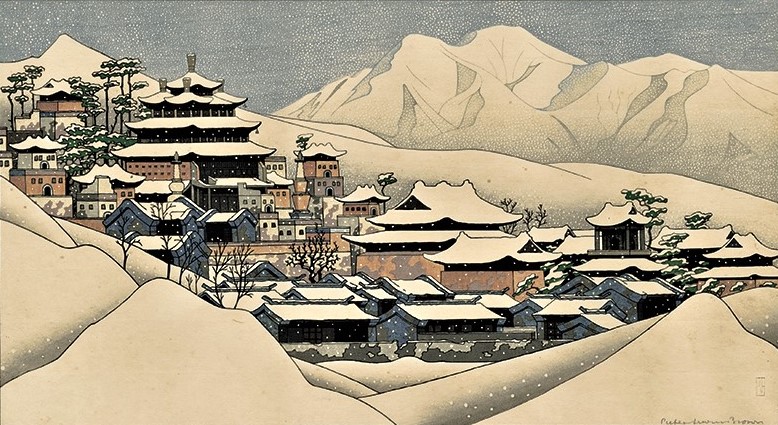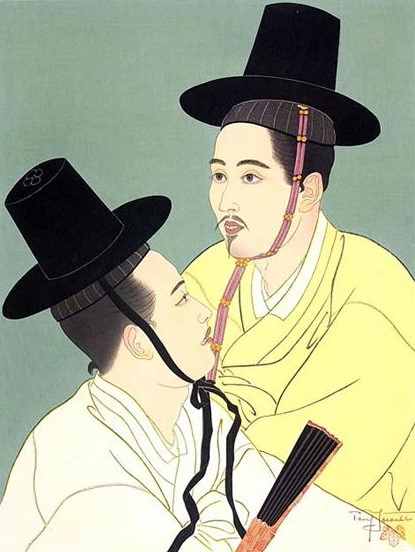LÉA LAFUGIE (1890-1972)
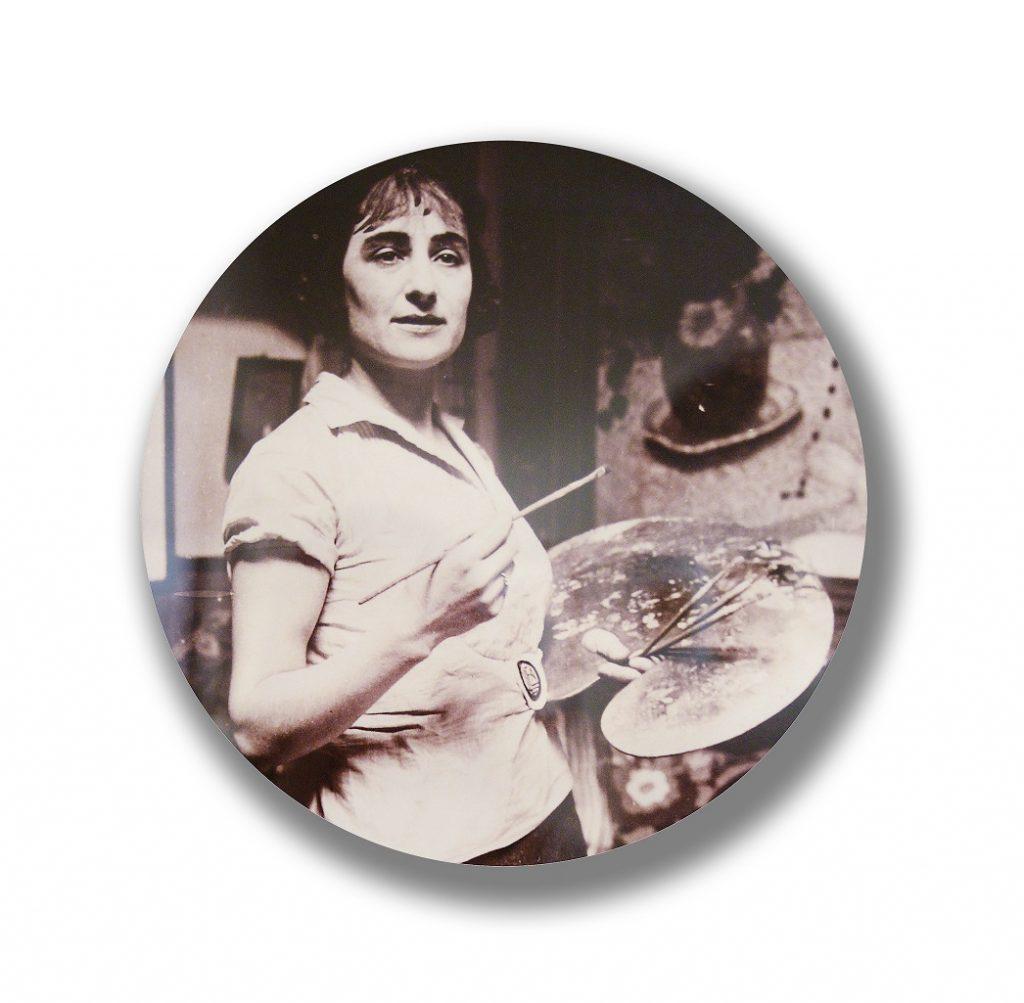
Léa Lafugie has a special place in the Far Eastern movement : painter-traveller, she undertook expeditions to Asian countries still unknown in her time, on foot, on horseback or by canoe, showing boundless courage and of an uncommon spirit of adventure, with only his pencils and brushes as weapons, bringing back a multitude of canvases, watercolours and drawings, sometimes landscapes but more often portraits of characters from all social classes, offering us a powerful work, an artistic and exceptional ethnographic investigation that complete two books of great literary quality. This unique testimony to lands and populations living outside of time remains, however, still little known today. Contemporary of the great explorer Alexandra David-Néel without having acquired the notoriety of the one who was the first "Parisian in Lhasa", of Ella Maillart whose bookstore successes still last today or of Alexandre Iacovleff, also a famous painter traveller, she fully deserves to figure among the great artists painting Asia in the first half of the 20th century.
Born in Paris in 1890 into a bourgeois family in the 7th arrondissement, she benefited in her childhood from the advice of her grandfather who was a draftsman at the Ministry of the Navy. She engaged in artistic studies, first at the School of Decorative Arts in Paris, then at the School of Fine Arts and the Jullian Academy. She practiced for ten years in fashion drawings, nude paintings, engravings of sophisticated hairstyles and portraits of young women, displaying the new feminism of the "Roaring Twenties" after war, in the style of Suzanne Valadon, Paul-César Heleu or Louis Icart.
Yet it was a completely different path that Léa Lafugie chose to follow in 1925, breaking brutally with the fashion of the time and its European space. Endowed with a strong personality, a permanent desire for independence, a curiosity for distant cultures and a taste for great travels, Léa Lafugie engaged in a life of adventures that few women in her time dared to lead and in an artistic creation whose boundaries were constantly pushed back. Like most orientalists of the time, it was first to North Africa that she turned her gaze during a three-month stay in 1924 during which she produced works that were exhibited in Tunis. But the big departure took place in March 1925 and the direction this time was Asia. The journey lasted five years, with a multitude of stops and countries visited, making her the most extravagant painter-explorer of the 20th century.
Ceylon, India, Tibet, Burma, Cambodia, Laos, Vietnam, Indonesia, China, Japan have been her stages, always lasting several months. She managed to alternate long periods of solitary exploration in territories where no European had penetrated and luxurious stays in local aristocratic families or Western diplomatic circles, with the "policy" of being accepted everywhere by offering their portrait to her hosts, seized with curiosity and enchanted by her artistic talent as well as by her open-mindedness and her understanding of situations.
Her main objective was Tibet, at the time terra incognita conveying all the attractions of such a different world, without her knowing that at the same time another Frenchwoman, Alexandra David-Néel, shared the same goal. Her first expedition took place in 1926 from Lahore and allowed her to travel through Kashmir before reaching Ladakh where she stayed for several weeks in Tibetan monasteries lost at high altitude. Her hosts have never received a visit from Europeans, let alone a woman - even if she often dressed like a man - but to the traditional hospitality they show her was added the pleasure hitherto unknown to discover their portrait made in front of them in a few hours. A year later, she left Darjeeling on horseback and accompanied by ten porters, crossed Sikkim, entered Tibet and reached Gyantse, at an altitude of 4,000 m, after a journey of 1,800 km. Back in Bengal, in December 1927 she organized an exhibition at the School of Fine Arts in Calcutta where she presented 280 works, the fruit of these trips, which established her already great reputation in the British Empire. She attempted a third expedition, a few years later, in 1931, from Shimla, the summer capital of British India, ascending the course of the Indus, entering Tibet again via Lake Pangong, descending the upper course of the Indus, crossed Ladakh again and returned via Srinagar : again covering 2000 km on foot, crossing passes at more than 5,000 m in freezing cold, she admitted that it was the most perilous journey she had undertaken ! All the canvases and watercolours that have come down to us are both a festival of "tawny" colours and a requirement to show the stark reality of the characters and extraordinary places that she encountered : no Western painter has managed to grasp Tibet like her.
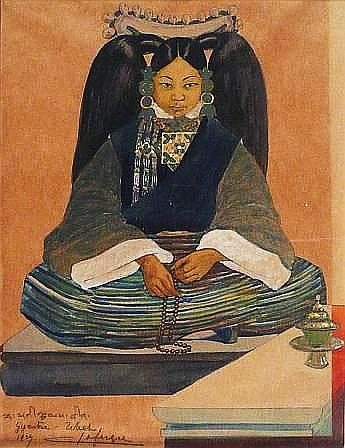


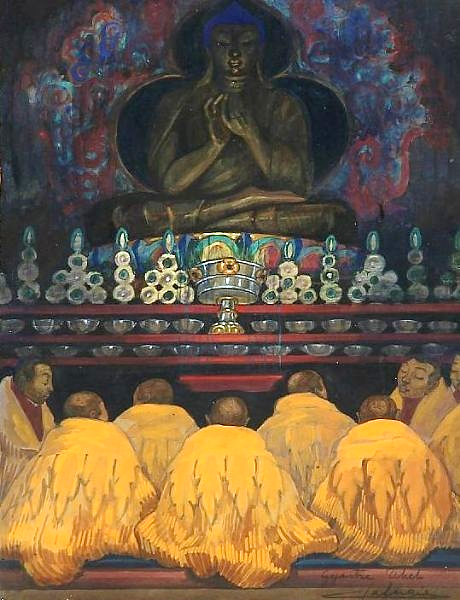


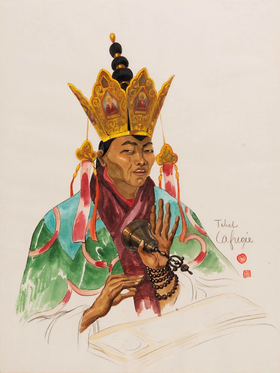
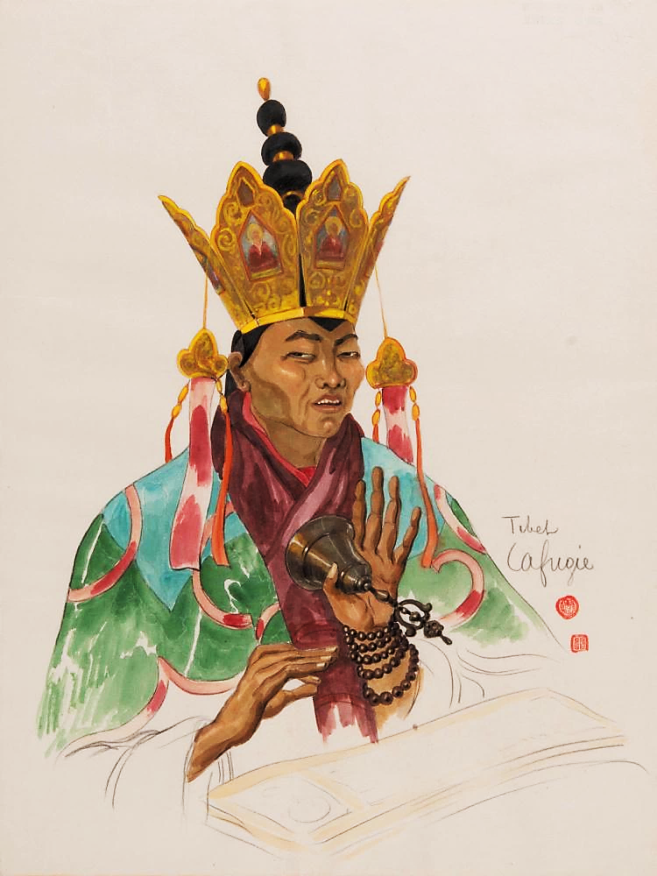

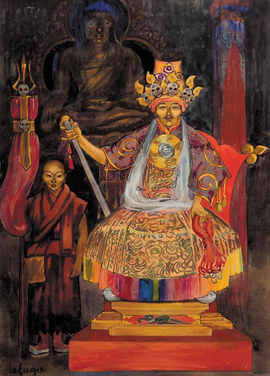


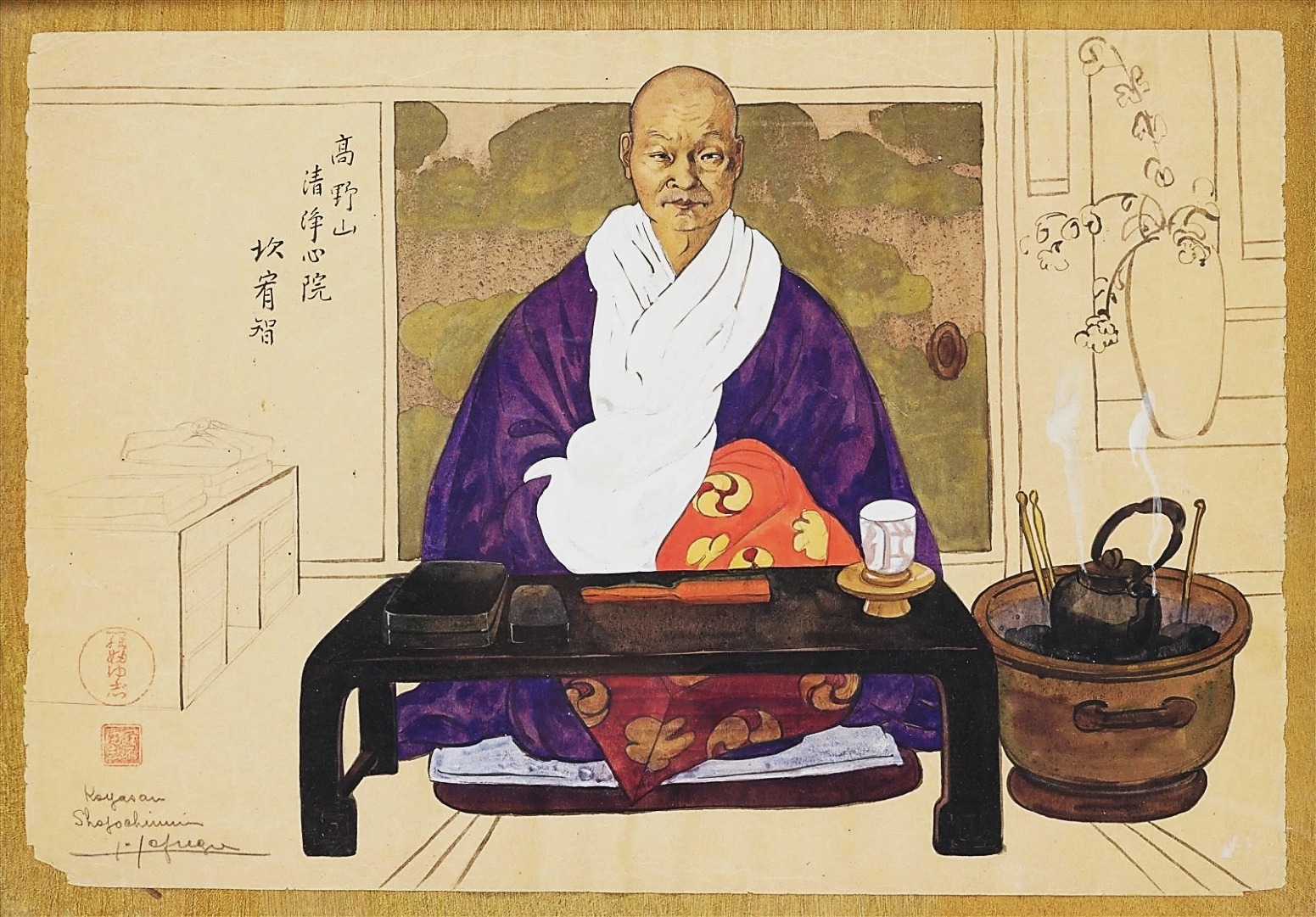
The intrepid explorer offers a completely different face to the upper classes of the Indian Empire or Indochina who welcome her. She is not only the talented artist who comes from France and who agrees to paint the portrait of her hosts. She is also a woman of the good Parisian bourgeoisie, rich in a solid culture, fluent in English, fond of history and local civilizations, endowed with an exceptional personality which is added to an asserted femininity, offering all the qualities required to shine with both diplomats and Maharajas.
From 1925 to the end of 1927, when she was not in Tibet, Léa Lafugie traveled the British Indies : her first stay was in Ceylon from March to December 1925, then in Calcutta, Bénarès, Dehli, Bombay, Amristar, Agra, Jodpur, welcomed everywhere by the princely courts, portraying and organizing its exhibitions. She also met and painted the writer Rabindranath Tagore and Mahatma Gandhi. She began the year 1928 in Burma, then stayed in Siam where she met the man who became her husband a few years later, André Decamps, in Cambodia where she drew the temples of Angkor and painted the portrait of King Sisowath Monivong, in Laos where she met Alix Aymé, a French artist in charge of the decoration of the King's Palace whose Léa Lafugie painted the portrait , in Indochina where she became friends in Hué with the painter Marie-Antoinette Boullard-Devé who accompanied her to Hanoi, from where she took the railway built in 1910 which led her to Yunnan in Kunming, then she joined Hong Kong and ended the year in Shanghai !!!
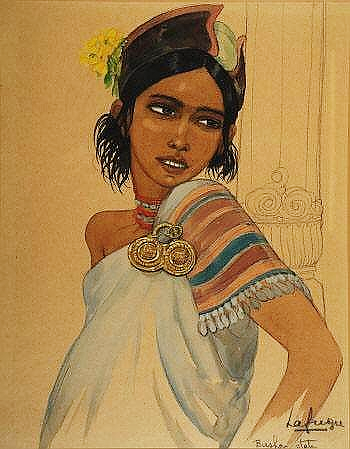


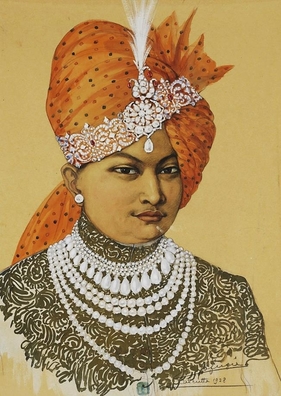
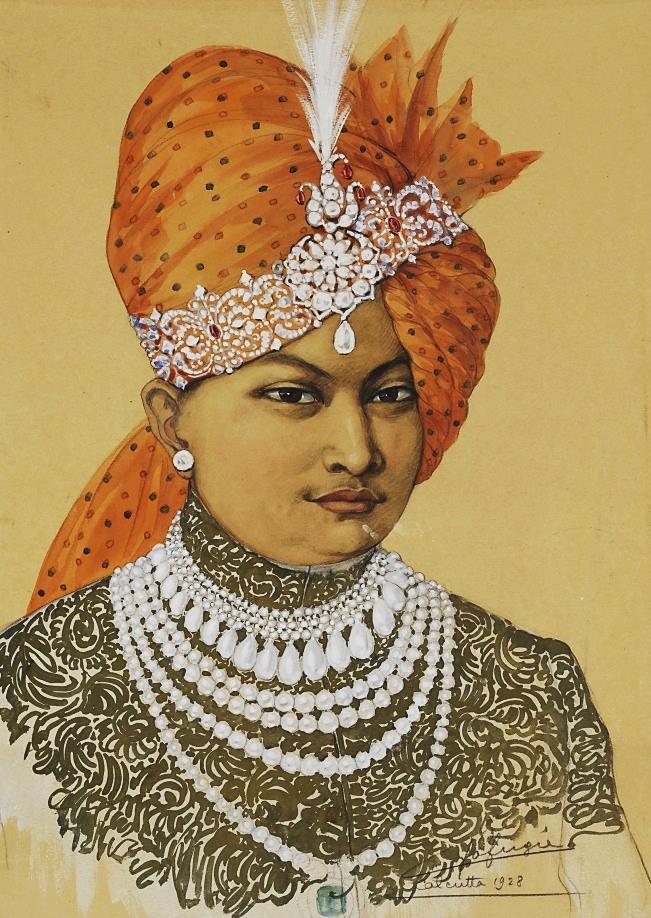

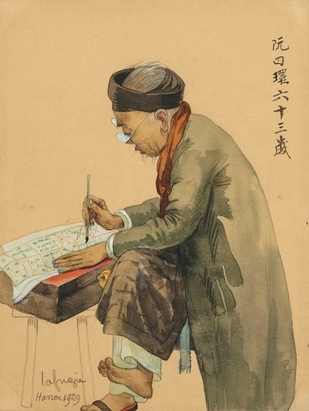
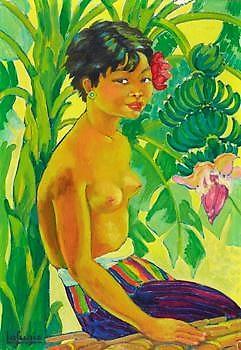
The first months of 1929 were spent in China, first in Hangzhou where she met the French painter André Claudot (1892-1982) then professor at the local Academy of Fine Arts, then in Beijing and finally in Nanjing where she attended, in June, at the ceremonies of the burial of the coffin of Sun Yat Sen at the Mausoleum of the Purple Mountain (she recounts this event in L'Illustration of June 29, 1929). At the request of his widow, Song Qinglin, she made a posthumous portrait of the famous creator of the Chinese Republic. From September to December, she visited Japan and had the exceptional privilege of producing portraits of Emperor Hiro Hito and Impress Kojun. Finally, in January 1930, she decided to head back to France, passing through Honolulu, Tahiti, San Francisco, New York to arrive in Paris in April.
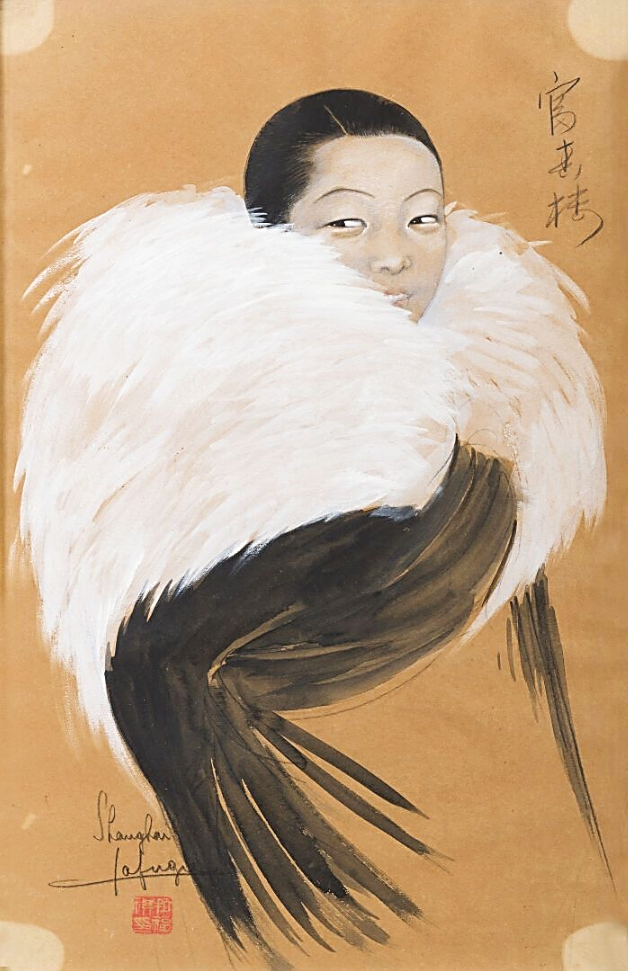


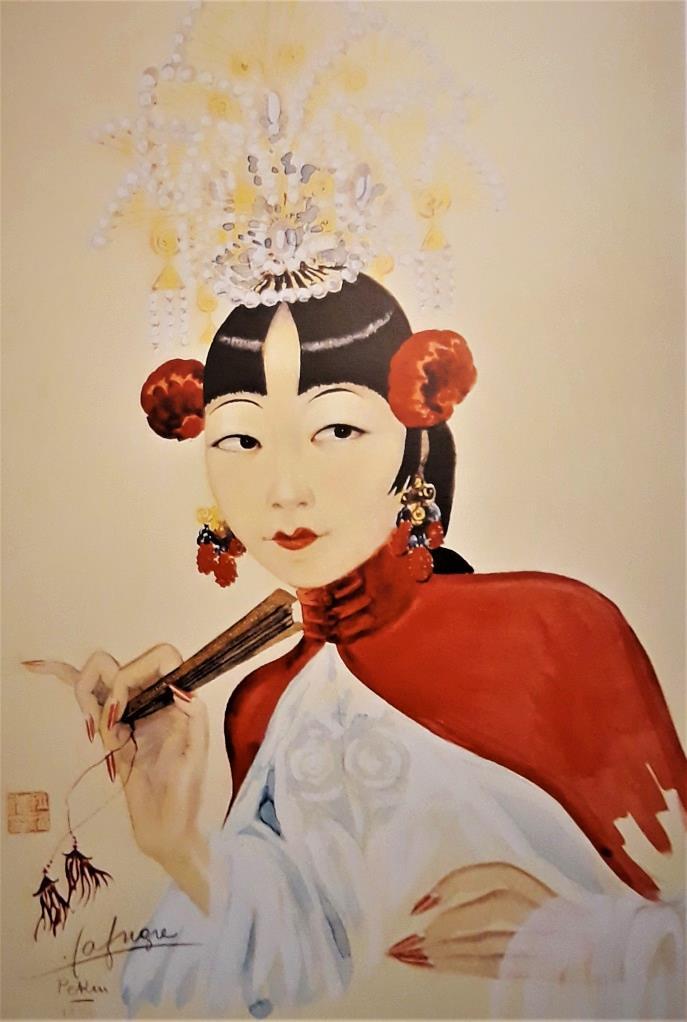


She only spent a few months in France exhibiting her works and giving lectures and left in September 1930 for the Dutch Indies. She again reconciled stays in exchange for portraits with powerful Javanese sultans, among the Dayak tribes of Borneo, then in Celebes and Bali. She joined the British Indies in the spring of 1931 to carry out the third expedition to Tibet mentioned above and on her return decided to return to France via Iran, Iraq, Syria, and Lebanon to be in Paris in July 1932 !
Léa Lafugie married in October 1932 - she was already 42 years old - with André Decamps who offered her all her life both support and respect for her independence (as Alexandra David-Néel's husband did) and in particular her insatiable taste for travel. The couple settled in northern Thailand in Chiang Rai (André Decamps ran a teak logging company there), which allowed Léa Lafugie to continue to shine for ten years throughout Southeast Asia, continuing her work and exhibiting in Saigon, Hanoi, Singapore and Bangkok. After Pearl Harbor, they were forced to settle in Indochina but were imprisoned in March 1945 when the country was occupied by Japanese troops and were not repatriated to France until May 1946.
A calmer life then opened up for Léa Lafugie. Apart from a stay from 1951 to 1955 in Colombo where André Decamps carried out a mission for the United Nations and a quick stay in Bali in 1964, the post-war years were devoted to numerous conferences and exhibitions, notably in 1948 at Washington and New York, and the writing of two books on the expeditions to Tibet. The first, Au Tibet, appeared in 1950 with a preface by Alexandra David-Néel and the second, Le Tibet, terre des Bouddha vivants in 1963 : in addition to the captivating stories, both are full of drawings and reproductions of paintings and we discover that Léa Lafugie was also a very talented photographer. She died in June 1972.
One can only admire the woman and the artist, for the courage shown on many occasions during her wanderings, for the ability to integrate into the most upscale and the most miserable circles and for the organizational qualities that such trips require, with the constant will and ability to paint and draw in all circumstances. The number of works produced have been considerable, most, offered on site, have disappeared and the few hundred that were brought back to France have been dispersed and reappear only occasionally. Léa Lafugie's notoriety suffered and it was only in 2012 that some of her works were presented at the Cernushi Museum in Paris (exhibition "Du Fleuve Rouge au Mékong"). A major exhibition of her works was also held in Jakarta in 2016, 85 years after his stay in Indonesia.
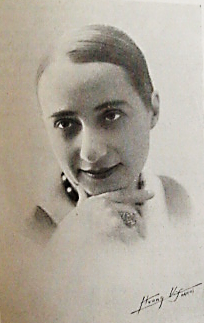
Bibliography :
- Au Tibet, par Léa Lafugie, J.Susse, Paris, 1950
- Le Tibet, terre des Bouddha vivants, par Léa Lafugie, société continentale d’éditions modernes illustrées, Paris, 1963
- Léa Lafugie, art et aventure, par Didier Hamel et Sandrine Dapsens, Hexart Publishing, Jakarta, 2016
The collection
